ERIC PERVUKHIN’S RELIGIOUS PAINTINGS
Once, religious painting was painting.
It sat on its great throne, and nothing could enter into the kingdom of
art except by reflecting its light. The Holy Family, the saints, and the
donors ran the whole show.
But the images that remained excluded could
not be kept out forever. As the ages rolled on, they came crawling off
the sides of wedding chests and out of the loops of capital letters in
illuminated manuscripts. Details in religious paintings themselves, which
had been pushed into margins and backgrounds, emerged from their proper
places and crowded the canvas. Nothing could hold back the advancing tide.
Religious painting did not depart without
a struggle, and it made spirited attempts at a shaky coexistence with subjects
that it had once dominated. But in the end it was compelled to shrink and
retreat. The saints fled. The angels vanished. And religious painting seemingly
melted away. But where did it go?
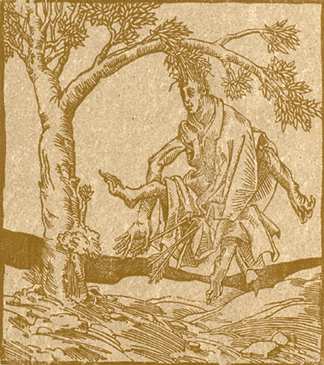
Eric Pervukhin, relying on scholarly discipline
as much as inspiration, has tracked it down in its long-forgotten hiding
places. He has found the old themes rotting away in dank, dark, unhealthy
corners, partly decomposed and partly eaten away by a foul variety of fungal
growths. Strange lichens have transformed the texture of the traditional
images (“Proving of the Cross”)
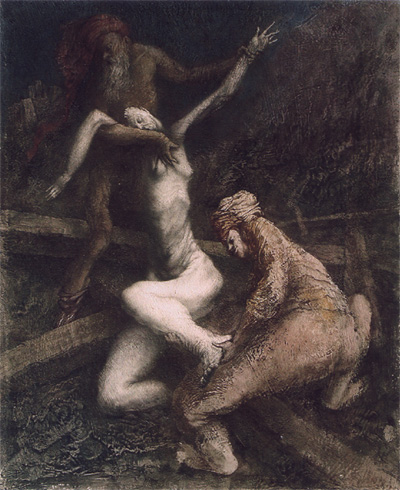
and invasive slime molds have given them an unlovely, oleaginous appearance
(“Simon Peter and Simon Magus”).
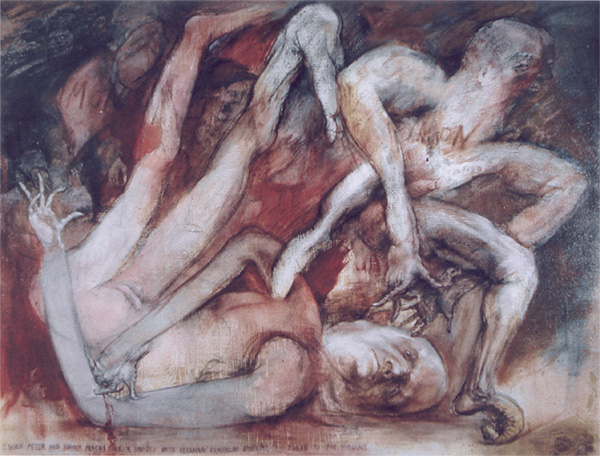
In the representations themselves, physical deformity has become the
norm, and what was once linked with grace and balance has deteriorated
into visual solecisms. Pervukhin has extracted this ancient art from some
kind of aesthetic sewer, he has carefully dried and restored it, and he
has reproduced it, with an antiquarian’s assiduousness, exactly as it appears
in its current state.
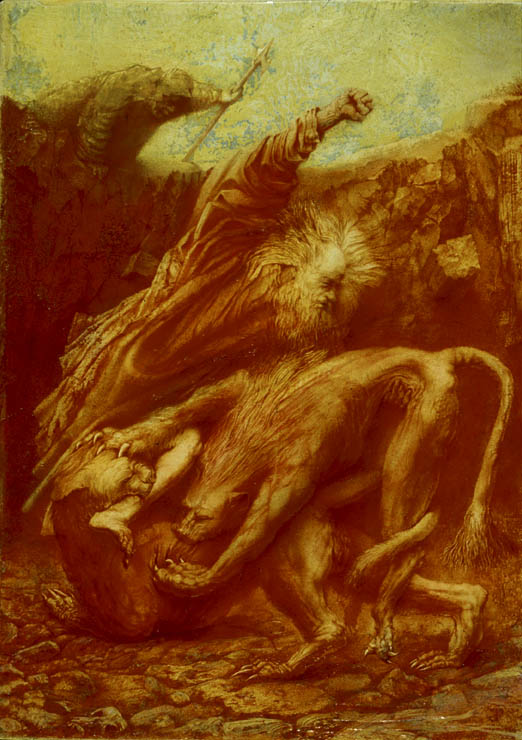
Nothing, perhaps, reveals the full extent of
its decay as much as those images which seem to have been preserved in
a dry environment, as was the case with “St. Sebastian” and “St. Boris,”
which have remained relatively intact on a crumbling wall. The corruption
that set in once they were deprived of light, air, and human attention
seems to have transformed not only their physical properties, but their
very meaning as well. It is for this reason that in “The Martyrdom of St.
Boris” we sense echoes of the art of public rest rooms. Over centuries
of neglect, the living spirit, which once flared forth so boldly from these
subjects, descended entirely into the body, and once in the body it continued
to sink until it reached the lowest levels of bodily life. Here it settled
down into a long and putrid stagnation. As a result, the only possible
path to martyrdom and miracles in these canvases is through lechery, and
the conception of sainthood evoked here carries a distinctly urological
flavor.
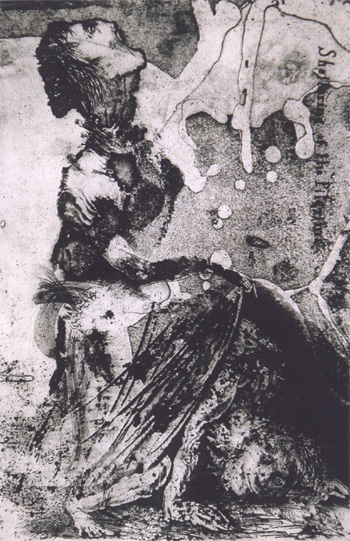 __ __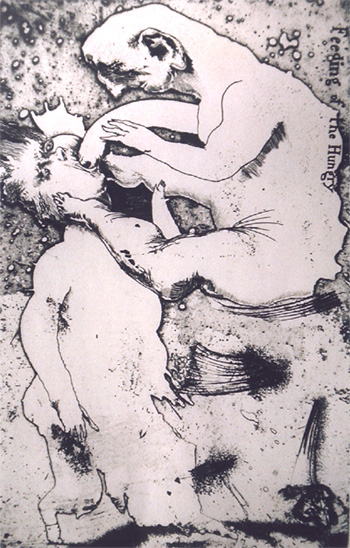 __ __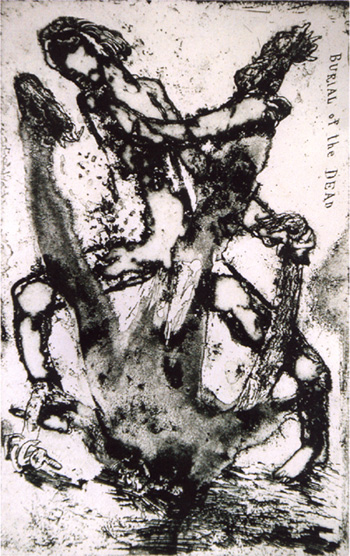
The question that these paintings raise and
leave unanswered concerns the motivation behind Pervukhin’s aesthetic explorations.
Was it an interest in religious art and the later fate of its visual canon
that led him to seek out these formerly exalted images? Or might it have
been, rather, a predilection for the offensive smells of corruption that
made him close his eyes like a mystic and follow his nose to seek out those
places where the strongest stench was coming from — only to discover, perhaps
to his own surprise, that what was rotting there was in fact religious
imagery? There are many putrid things in the world of art, but few of them
have been rotting away for quite as long as the iconology of the sanctified
church. For an artist sensitive to the nuances of decomposition, little
can offer a reek as fulsome as the one developed by religious painting
through its centuries of stagnation after it quit the limelight.
It seems decidedly impossible to say which
of these two paths led Pervukhin to the images so masterfully brought to
life in these paintings, but whichever of them it was, we are grateful
that he ended up where he did.
|

![]() © 2003-2005 Ars Interpres Publications.
© 2003-2005 Ars Interpres Publications.